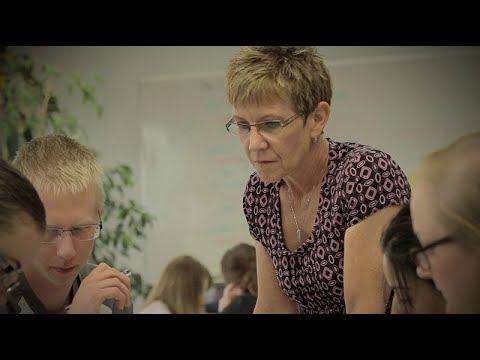Career Overview
College and other vocational—or career-related—instructors teach applied arts and academic, technical and vocational subjects to students at community colleges, Quebec CEGEPs, technical and vocational institutes, language schools and other college-level schools.
This group includes department heads and trainers who work for companies, community agencies and governments to deliver in-house training and develop courses.
Job Titles
Duties
In general, college and other vocational instructors:
- Teach students using lectures, demonstrations, discussion groups, laboratory work, shop sessions, seminars, case studies, field assignments, and independent and group projects
- Develop curriculum and prepare outlines and teaching materials for courses
- Prepare, administer and mark tests and papers
- Advise students on educational programs and careers
- Supervise independent and group projects, field placements, laboratory work and hands-on training
- Give one-on-one tutorials and instruction
- Supervise teaching assistants
- Keep subject matter current
College and other vocational instructors may specialize in particular fields of study such as visual arts, dental hygiene, welding, engineering technology, policing, computer software, management or early childhood education.
Some instructors serve on committees that deal with budgets, curriculum, administration, and course and diploma requirements. Some may offer consulting services to government, businesses and other organizations.
Earnings
Earnings is income that workers receive in exchange for their labour. Depending on the type of employment, earnings can be in the form of wages (hourly), salaries (fixed monthly or annual) or self-employed earnings.
Work Environment
# Workers Employed
11,460% Employed Full Time
57%College and other vocational instructors typically teach in clinical, classroom or lab settings. They usually work during regular daytime hours, but may have some evening work. They must also be available to students during designated hours, either in person or by email, telephone or video conference. They have flexibility in terms of scheduling their time for course preparation, grading and research. Online courses also offer flexibility.
Adult education instructors often teach during evenings or on weekends. Those who work as corporate trainers or training officers must cater to the schedules of the client’s workplace and its workers. They may need to travel and perform administrative tasks.
Instructors may share offices. They may also teach at more than one school, which can mean travel between workplaces.
Technology is changing the work environment for instructors. Both public and private colleges are increasing online learning options for students. As a result, instructors need to be familiar with the associated technology.
Career Pathways
Recent graduates often find temporary positions as instructors or instructional assistants. With experience, they may move to regular part-time and then full-time positions.
College and other vocational instructors with long-term experience may progress to administrative positions. Those with strong academic qualifications may fill senior administrative positions such as department head, associate dean, dean or vice-president of academics or education.
Occupational Interests
It’s important to understand what kinds of occupations align with your interests.
For more about occupational interests visit Skills for the Future Workforce > Characteristics.
Here are the top occupational interest(s) for this career profile:
Education, Training and Skills
College instructors must have a college diploma or a bachelor’s degree. Academic positions require a master’s degree. Vocational instructors must, at minimum, have demonstrated skill in their field. Trades instructors need to have completed an apprenticeship program and have industry/trade certification, such as Red Seal. They must also complete the Provincial Instructor Diploma Program.
Other requirements may include:
- A certificate, diploma or degree in adult education
- Additional teaching training
- Teaching experience at the post-secondary level
Education programs in B.C.

Top Skills
Every job calls for a certain set of skills. Knowing those skills is the first step in finding a good career fit.
Here, you will find the 10 most relevant workplace skills. Some are more important to achieving success in a certain career than others. These skills may come naturally to you or you may need to gain them through education, training and experience.
See the list of work-related skills below, ranked in order of importance for this career. Check out the list and see if this career matches your skills—take that first step!
Talking to others to share information effectively.
Teaching others how to do something.
Understanding written sentences and paragraphs in work-related documents.
Choosing and using training, instructional methods and procedures appropriate for the situation when learning or teaching new things.
Giving full attention to what other people are saying, taking time to understand the points being made, asking questions as appropriate, and not interrupting at inappropriate times.
Communicating effectively in writing as appropriate for the needs of the audience.
Using logic and reasoning to identify the strengths and weaknesses of alternative solutions, conclusions or approaches to problems.
Understanding how new information could be used to solve current and future problems in making decisions.
Keeping track of and assessing your performance, other individuals, or organizations to make improvements or take corrective action.
Being able to solve novel, ill-defined problems in complex, real-world settings.
Labour Market Statistics
Discover data, facts and information that have been gathered and analyzed. Learn about the characteristics of the economy and labour market in B.C.
Employment
Find out about employment types and trends by region and industry.
Employment
11,460Employment by Region







| Region | Employment | % Employment of this Occupation |
|---|---|---|
| Cariboo | 355 | 3.1% |
| Kootenay | 400 | 3.5% |
| Mainland/Southwest | 7,525 | 65.6% |
| North Coast and Nechako | 170 | 1.5% |
| Northeast | 115 | 1.0% |
| Thompson-Okanagan | 1,070 | 9.3% |
| Vancouver Island/Coast | 1,825 | 15.9% |
Labour Market Outlook
The B.C. Labour Market Outlook is a 10-year forecast of the expected supply and demand for labour in the province. It’s usually updated every year. The purpose is to provide British Columbians with the knowledge to make informed decisions on careers, skills training, education and hiring.
Forecasted Job Openings (2025-2035)
4,620Forecasted Job Openings
Forecasted Employment Growth Rate
Composition of Job Openings
Job Openings by Region (2025-2035)







| Region | Job Openings | Avg. Annual Employment Growth |
|---|---|---|
| Cariboo | 90 | -0.4% |
| Kootenay | 240 | 0.6% |
| Mainland/Southwest | 2,880 | 0.4% |
| North Coast and Nechako | 30 | -1.1% |
| Northeast | 60 | 1.1% |
| Thompson-Okanagan | 430 | 1.2% |
| Vancouver Island/Coast | 900 | 1.2% |
Industry Highlights
Learn about the opportunities in B.C.'s major industries, including employment trends, earning potential, locations of work and more.
Forecasted Job Openings by Industry
| Industry | Job Openings (2025-2035) |
|---|---|
| Educational Services | 3,010 |
| Health Care and Social Assistance | 520 |
| Professional, Scientific and Technical Services | 310 |
| Public Administration | 180 |
| Repair, Personal and Non-Profit Services | 150 |
Insights from Industry
Since this is a very large occupational group, many openings are expected. But the trend toward part-time and part-year employment, including session and contract work, means that workers may not get full-time employment immediately. This trend will have less of an impact on vocational instructors, many of whom already teach part time while also working in the field.
College and vocational instructors are in demand in all regions of the province. Colleges located outside of the Lower Mainland and southern Vancouver Island tend to have more difficulty recruiting instructors, especially in areas such as health and trades. As a result, there may be more opportunities for instructors who are willing to work in northern and rural regions.
Demand for college and other vocational instructors also varies based on the area of specialization. For example, increasing demand by businesses for skills upgrading, particularly in technical and applied technology fields, will increase demand for instructors in these areas.
The number of private post-secondary institutions that provide technical, vocational and language training has grown considerably. These schools often offer part-time work and contract positions, which usually pay less than equivalent positions in the public sector.
Resources
-
British Columbia Institute of Technology (BCIT)www.bcit.ca
-
Canadian Association of University Teacherswww.caut.ca
-
CUPE 2278, Teaching Assistants and Markers at UBC and UNBCcupe2278.ca
-
CUPE 4163, Educational Workers at UVic4163.cupe.ca
-
Federation of Post Secondary Educatorswww.fpse.ca
-
Government of B.C. – Find an Institutionwww2.gov.bc.ca/gov/content/education-training/post-secondary-education/find-a-program-or-institution/find-an-institution
-
Pacific Vocational Collegepacificvocationalcollege.ca
-
The Teaching Support Staff Union (TSSU), Simon Fraser Universitywww.tssu.ca








